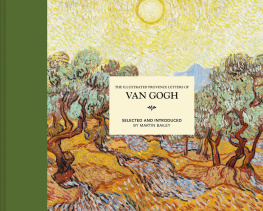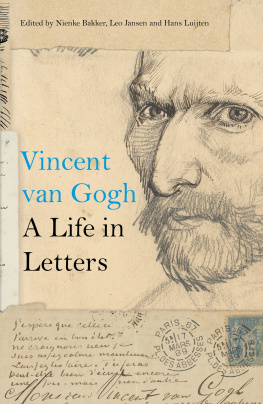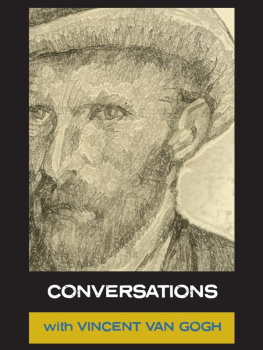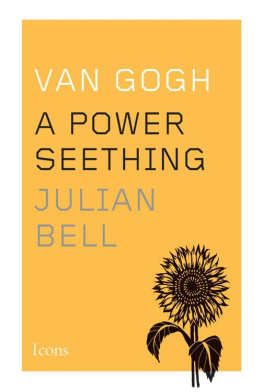Martin Bailey - The Illustrated Provence Letters of Van Gogh
Here you can read online Martin Bailey - The Illustrated Provence Letters of Van Gogh full text of the book (entire story) in english for free. Download pdf and epub, get meaning, cover and reviews about this ebook. publisher: Pavilion Books, genre: Detective and thriller. Description of the work, (preface) as well as reviews are available. Best literature library LitArk.com created for fans of good reading and offers a wide selection of genres:
Romance novel
Science fiction
Adventure
Detective
Science
History
Home and family
Prose
Art
Politics
Computer
Non-fiction
Religion
Business
Children
Humor
Choose a favorite category and find really read worthwhile books. Enjoy immersion in the world of imagination, feel the emotions of the characters or learn something new for yourself, make an fascinating discovery.
- Book:The Illustrated Provence Letters of Van Gogh
- Author:
- Publisher:Pavilion Books
- Genre:
- Rating:4 / 5
- Favourites:Add to favourites
- Your mark:
- 80
- 1
- 2
- 3
- 4
- 5
The Illustrated Provence Letters of Van Gogh: summary, description and annotation
We offer to read an annotation, description, summary or preface (depends on what the author of the book "The Illustrated Provence Letters of Van Gogh" wrote himself). If you haven't found the necessary information about the book — write in the comments, we will try to find it.
The Illustrated Provence Letters of Van Gogh — read online for free the complete book (whole text) full work
Below is the text of the book, divided by pages. System saving the place of the last page read, allows you to conveniently read the book "The Illustrated Provence Letters of Van Gogh" online for free, without having to search again every time where you left off. Put a bookmark, and you can go to the page where you finished reading at any time.
Font size:
Interval:
Bookmark:

THE ILLUSTRATED PROVENCE LETTERS OF
VAN GOGH

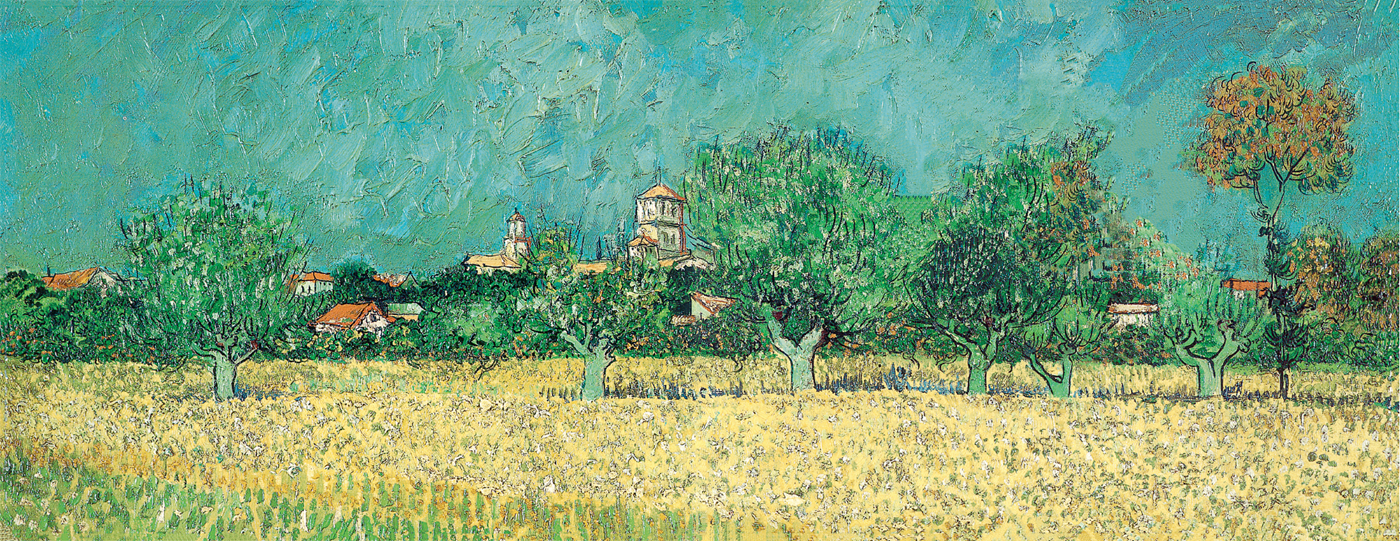


1 PEAR TREE IN BLOOM
April 1888.
V INCENT VAN GOGHs greatest paintings were done during his 27 months in Provence. It was here, under the strong light of the Midi, that he captured his sunflowers, orchards, olive groves and harvest scenes. But in addition to his paintings, Vincent left us his letters, a collection of correspondence that enhances our understanding of his pictures. In them Vincent describes the landscape of Provence: the town of Arles, the farmland of the Crau and the mountains of the Alpilles. He writes about his friends and family, most of them far away in Paris or Holland. He discusses his favourite artists and authors, and what they mean to him. He recounts the day-to-day struggle of living without a job he was dependent on money sent by his brother Theo and of being ignored by the art world. Most important of all, Vincent writes about his own paintings, often including a little sketch in his letters to explain what he is working on. These sketches, done very quickly and with great spontaneity, capture what he considers are the essential elements of a picture. Vincents handwriting is also revealing: he has a great variety of styles, even within one letter, which reflect the mood of what he is trying to say.
The majority of Vincents letters were written to his younger brother Theo, who was an art dealer in Paris. Theo kept Vincents letters in a cabinet at home in Montmartre and, after his marriage, his wife Jo recalled that week after week I saw the soon familiar yellow envelopes with the characteristic handwriting increase in number. Theo died just six months after Vincents suicide, aged only thirty-three. His wife treasured Vincents letters, recording that on her return to Paris after Theos funeral the correspondence comforted her: The first lonely evening which I spent in our home after my return I took the package of letters Evening after evening that was my consolation after the miserable days I not only read the letters with my heart, but with my whole soul. And so it has remained all the time. I have read them, and re-read them, until I saw the figure of Vincent clearly before me.
Vincents letters to Theo are not the only ones that survive. The correspondence with his mother and his youngest sister Wil exists as do letters to his artist friends Paul Gauguin, Emile Bernard, Paul Signac, John Russell, Eugne Boch and Arnold Koning, as well as those to the Ginoux family, who were his closest friends in Arles. Considering that it was not until years after his death that Vincents fame began to spread, it is surprising that so many of his letters have survived. From the three years that Vincent spent in Provence 260 of his letters survive, extracts from nearly half of which are included in this book. In making the selection we have concentrated on material that gives an insight into his everyday life and his paintings. One particular letter should be mentioned, since it was published here for the first time in English in the original version of this book. This is an important letter to Gauguin that Vincent wrote on 22 January 1889, just a month after the crisis that led him to mutilate his ear.

2 LETTER TO WIL
Part of a poem by Thomas Moore, Who is the Maid?, copied out in English in Vincents letter to his sister, c.23 December 1889 [W18/832].
In addition to focusing on Vincents stay in the south of France, this book includes a postscript on the seventy days that he spent at Auvers-sur-Oise, near Paris. It was here that Vincent committed suicide: he climbed up to the wheatfields where he had been painting and shot himself, dying two days later on 29 July 1890. On his body was found a final letter to Theo.
Although Vincent often found it difficult to communicate with people face-to-face, when he took up his pen the ideas flowed. His letters are peppered with references to the writers and artists who inspired him, and show that he was remarkably well-read. Vincent was also a good linguist: most of his letters from Provence were written in French. He also wrote in English, a legacy of his time as a young art dealer in London.
I have referred to Van Gogh as Vincent throughout the text because everyone knew him by his Christian name and this was how he signed his paintings.
This book was originally published by Collins & Brown in 1990, the centenary of the artists death. It was then entitled Vincent van Gogh: Letters from Provence. I would like to reiterate my thanks to Gabrielle Townsend, the Collins & Brown editor who commissioned the book and guided it through production. It is now being reissued with a slightly updated text by Pavilion Books. The text of the letters is from the 1958 English translation published by Thames & Hudson as The Complete Letters of Vincent van Gogh. In 2009 the Van Gogh Museum published a revised translation of the letters, which is also available online. In square brackets after each letter extract in our book, we first give the letter number from the 1958 translation, followed by that of the 2009 translation. In producing this 2021 Batsford edition I would like to express my thanks to Pavilions publishing director Tina Persaud and editorial assistant Lilly Phelan.

3 LETTER TO THEO
In this letter of 10 November 1888 [561/718] Vincent explains that Gauguin, who had just arrived in Arles, had suggested an ingenious way of making white picture frames. A tiny sketch was added, showing how Vincent had just framed his painting of The Red Vineyard.
Finally, I hope that the letters will present Vincents paintings in a fresh light, adding another layer of meaning to them.
MARTIN BAILEY
August 2020

4 SELF-PORTRAIT WITH DARK FELT HAT
One of his early self-portraits, painted in Paris in the winter of 188687.
W HEN VINCENT VAN GOGH arrived in Arles, on 20 February 1888, he was almost thirty-five. Although this was to prove his greatest year, in terms of the masterpieces that he produced, he had only started to paint six years earlier. In that short time, he had taught himself. To begin with he had worked in dark colours, depicting the peasants of Brabant. Then, during his time in Paris, he lightened his palette, influenced by the colours of the Impressionists. As he set off for Arles, he was just in the process of developing his highly personal style.
Vincent was born on 30 March 1853 at Zundert, a village in the south of the Netherlands. His childhood seems to have been unremarkable, although he was a rather lonely and awkward boy. His father Theodorus was a Reformed Church pastor and his mother Anna Carbentus ran the family home. The familys eldest son, Vincent had three sisters and two brothers.
Font size:
Interval:
Bookmark:
Similar books «The Illustrated Provence Letters of Van Gogh»
Look at similar books to The Illustrated Provence Letters of Van Gogh. We have selected literature similar in name and meaning in the hope of providing readers with more options to find new, interesting, not yet read works.
Discussion, reviews of the book The Illustrated Provence Letters of Van Gogh and just readers' own opinions. Leave your comments, write what you think about the work, its meaning or the main characters. Specify what exactly you liked and what you didn't like, and why you think so.

